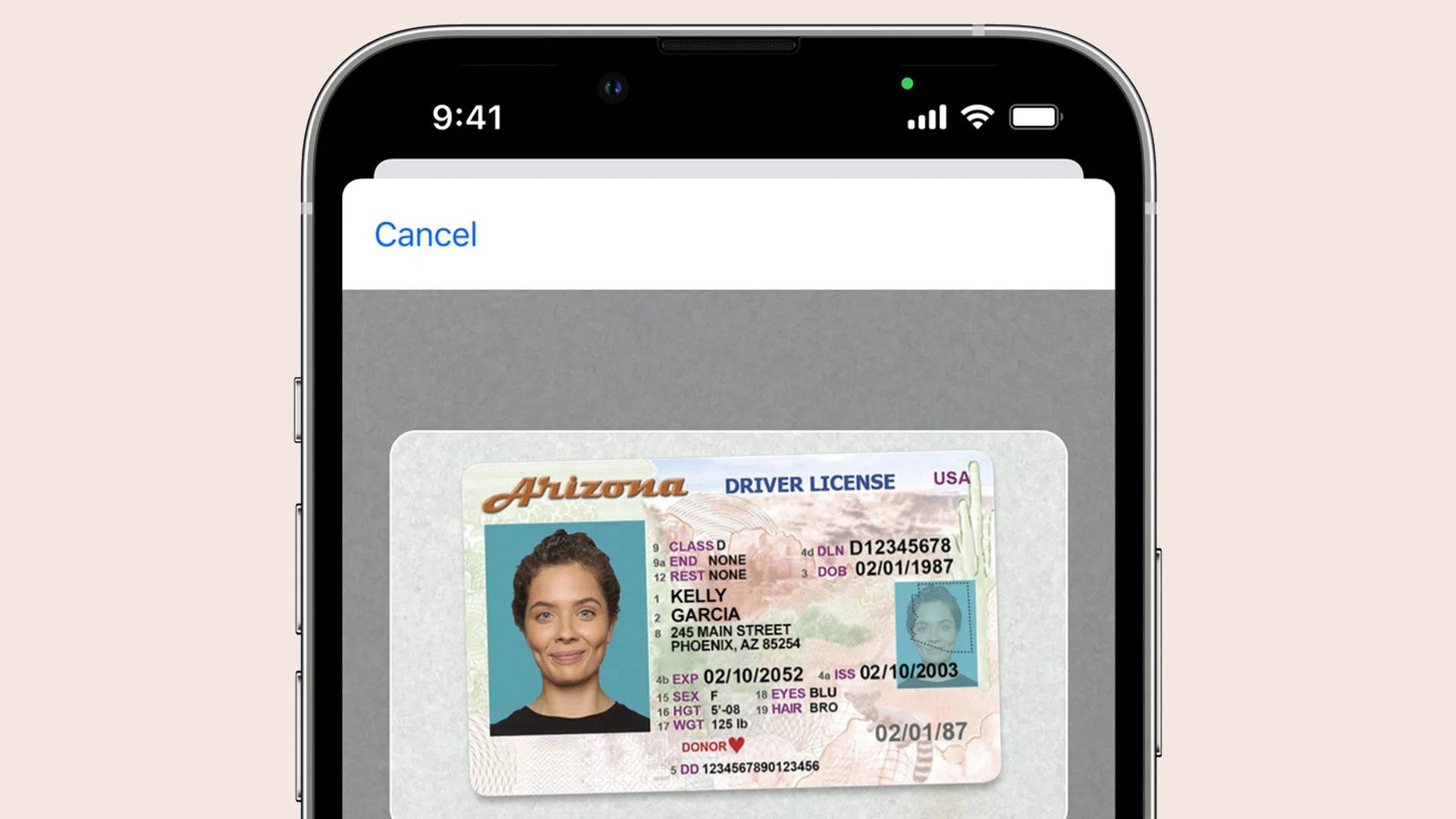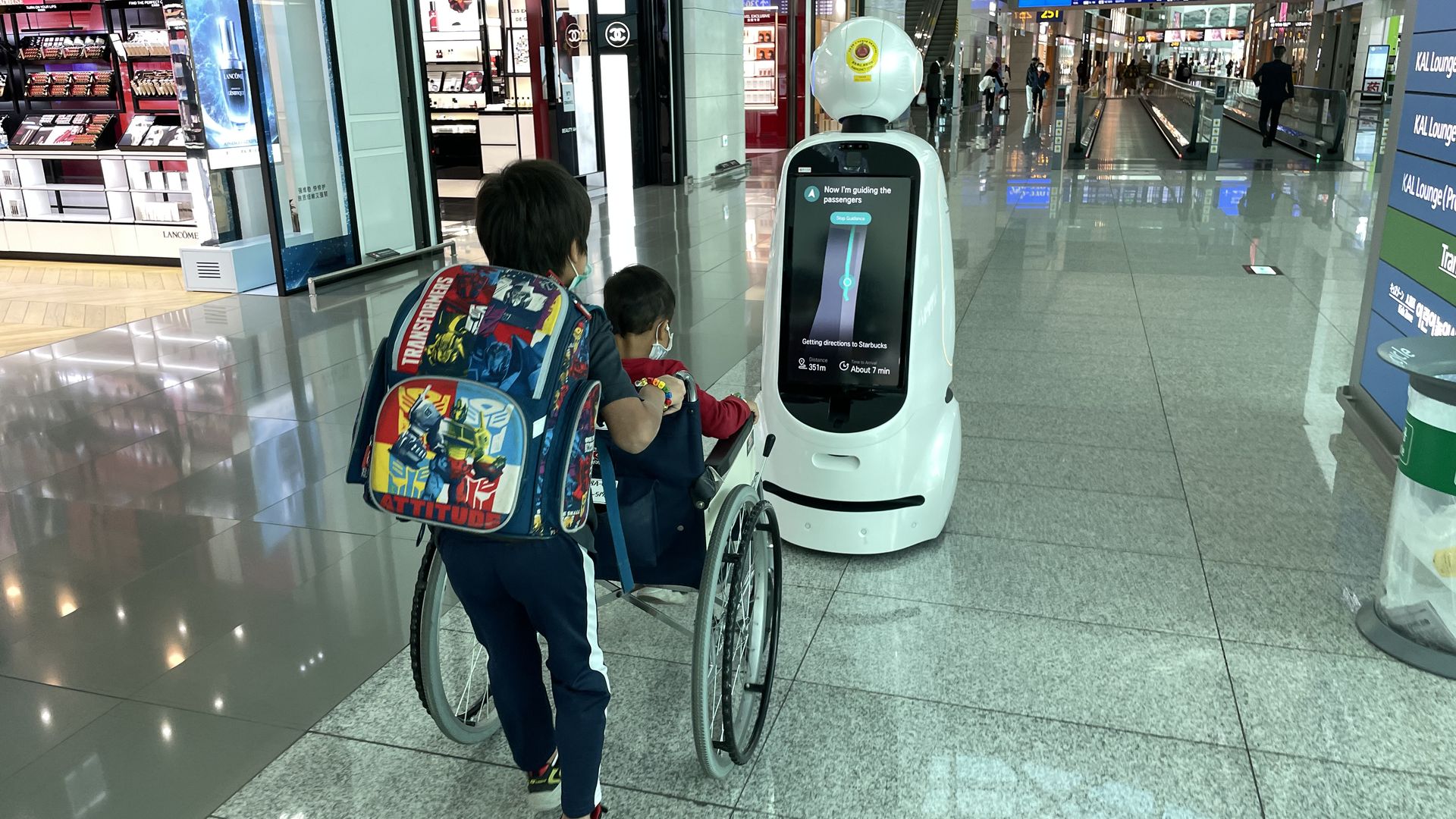| | | | | | | | | | | Axios What's Next | | By Jennifer A. Kingson and Joann Muller ·Mar 25, 2022 | | After reading a recent issue of What's Next, reader Desiree Furness posed a question to us: Should robots have genders? - See Item 5, below, for the photo that prompted her question, plus a little discussion. Share your thoughts with us at whatsnext@axios.com.
Today's Smart Brevity count: 1,135 words ... 4 minutes. | | | | | | 1 big thing: The home of the future may generate its own electricity |  | | | Illustration: Sarah Grillo/Axios | | | | The "smart home" of the future may be fully or partially energy self-sufficient, equipped with a charging station that not only powers your electric vehicle, but could serve as a backup generator if the electricity goes out, Jennifer A. Kingson writes. Why it matters: One of the great promises of smart home technology is resilience — the idea that we might wean our dependence on the power grid by building in solar capabilities and relying more on stored battery power. Where it stands: The current generation of smart appliances and systems (for the kitchen, home entertainment, heating and air conditioning, and more) tend to be relatively big electricity gobblers, even if they're more energy-efficient than the items they replaced. - Among the big challenges will be to lower the energy footprint needed to power all the conveniences we're seeking in a smart home, and to do so in ways that can withstand blackouts.
- LED lights combined with intelligent lighting, climate control and window shades are already translating to lower energy consumption (and lower bills) for those who have installed them — but they're just a small start.
- Over time, the goal is for smart homes to generate and store their own power, potentially reducing demands on the grid and turning smart homes into a symbol of sustainability.
Yes, but: It'll take a lot of work to get from here to there. For now, the energy advantages of smart home technology tend to be minimal — in part because the technology isn't pervasive or standardized. Read the rest |     | | | | | | 2. Nearly 1 in 5 Americans now live in multigenerational households |  Data: Pew Research Center; Chart: Baidi Wang/Axios Americans are more than twice as likely to live in multigenerational family households than they were half a century ago, Nathan Bomey writes in Axios Closer. Why it matters: Financial concerns, caregiving needs, marital trends and demographic shifts are driving changes in how we live. - The number of people living in multigenerational households quadrupled from 1971 to 2021, while the share of the population in such an arrangement more than doubled to 18%, according to a Pew Research Center study released Thursday.
- Population growth among people of color is a big reason for the increase, as they are more likely than white Americans to live with extended family, according to Pew, citing census data.
- "This is not a phenomenon that has peaked," D'Vera Cohn, one of the authors of the report, tells Axios.
Be smart: A majority of adults who live in multigenerational households say financial issues are a key reason. - 50% of lower-income adults in such households say the arrangement helps them at least a little financially, compared with 36% of middle-income and 24% of upper-income adults.
- Young adults moving away from home, postponing marriage or getting jobs later in life is a contributing factor.
Read the full story |     | | | | | | 3. Would that it existed! A LEGO-sorting vacuum |  | | | Screenshot: Unnecessary Inventions via YouTube | | | | What household with children doesn't need a LEGO vacuum — particularly one that sorts them by size? What it is: A working prototype of a product-that-unfortunately-doesn't-exist by Matty Benedetto, an inventor in Burlington, Vermont, whose popular YouTube channel is called Unnecessary Inventions, Jennifer writes. - "Over the past two years, he has designed and fully prototyped over 275 new inventions that solve problems that don't exist," Benedetto's channel says.
- Each week he "develops one to three fake consumer products using diverse production methods: 3D printing, sewing, mold making, wood working, laser cutting and whatever else he can get his hands on."
- Each post "mimics a real marketing campaign with their signature product photos and commercials alongside behind-the-scenes videos on how the inventions get built," Benedetto writes.
The backstory: Benedetto tells AV Club, a pop culture news site, that he was inspired by "an episode of 'The Office' where David Wallace tells Michael about his exciting new idea: a ShopVac-style cleanup device that 'teaches kids how to pick up their own toys.'" - Benedetto also invented a pair of LEGO socks that exist primarily in the dreams of tender-footed parents.
(H/T to Ina Fried for flagging Benedetto's viral vacuum video in Axios Login.) |     | | | | | | A message from Axios | | Smart communications for Hybrid 2.0 | | |  | | | | Watch Axios CEO Jim VandeHei discuss best-in-class employee communication strategies with Axios HQ clients. - Four modern organizations share how they tackle their most pressing leadership challenges with smart employee communication strategies.
Watch for free | | | | | | 4. ICYMI: Arizona now lets you use your iPhone as a driver's license |  | | | Image: Apple | | | | Apple's quest to let you leave your wallet at home has taken another step forward as Arizona has become the first state to let people store their official driver's license or ID on their iPhone, Ina Fried writes in Axios Login. Why it matters: Payments via phone, once rare, have become widely accepted. Until now, though, there has been no electronic option for government-issued identification. Driving the news: Apple announced Wednesday that Arizonans can now store their driver's licenses on their phone. - Apple also said that Colorado, Hawaii, Mississippi, Ohio and Puerto Rico plan to bring this feature to their residents.
- That's in addition to the seven states that Apple had announced last year would support the feature (Connecticut, Georgia, Iowa, Kentucky, Maryland, Oklahoma and Utah).
How it works: In Arizona, people have to scan the front and back of their driver's license or ID and take a video selfie to authenticate they are the person on the license. - That image is sent to the state motor vehicle department.
- The state, not Apple, is responsible for verifying the request.
Share this story |     | | | | | | 4. Should robots have genders? |  | | | Photo courtesy of Paul Neville | | | | Reader Paul Neville recently sent us this photo of his kids at Incheon International Airport in Seoul following a robot named AIRSTAR, who greeted them — in a female-sounding voice — and asked if she could be of help. - "Using the touchscreen on her chest, we asked where was the nearest Starbucks," Neville wrote to us. "She said, 'Follow me' and guided us there, deftly avoiding other travelers, telling us to watch our step over bumps, and occasionally asking if we were still there."
This prompted reader Desiree Furness to ask: "Just wondering, why is the robot female? Do we need to gender robots?" - The question has inspired lots of academic studies, many of which start from the premise that it's in our nature to try to assign genders to humanoid robots — the better for us to relate to them and accept their "intelligence."
- But we run the risk of perpetuating gender stereotypes.
What they're saying: "As soon as users assign gender to a machine, stereotypes follow," writes Londa Schiebinger, a history of science professor at Stanford University. - "The danger is that gendering robots may reinforce gender inequalities by hardening current stereotypes," says Schiebinger, who directs Stanford's research center on Gendered Innovations in Science, Health & Medicine, Engineering and the Environment.
- "Designing hardware toward current human stereotypes may amplify those stereotypes into the future."
Another study on Stanford's Gendered Innovations website sees opportunities to use robots to "create more equitable gender norms." - "We propose that researchers design controlled experiments to determine how perceived robot gender shapes human gender norms," the authors write. "Does robot gender promote or hinder gender equality?"
Share your thoughts with us at whatsnext@axios.com. |     | | | | | | A message from Axios | | Smart communications for Hybrid 2.0 | | |  | | | | Watch Axios CEO Jim VandeHei discuss best-in-class employee communication strategies with Axios HQ clients. - Four modern organizations share how they tackle their most pressing leadership challenges with smart employee communication strategies.
Watch for free | | | | Was this email forwarded to you? Get your daily dose of What's Next magic by signing up for our free newsletter here. |  | It's called Smart Brevity®. Over 200 orgs use it — in a tool called Axios HQ — to drive productivity with clearer workplace communications. | | | | | | Axios thanks our partners for supporting our newsletters. If you're interested in advertising, learn more here.
Sponsorship has no influence on editorial content. Axios, 3100 Clarendon Blvd, Suite 1300, Arlington VA 22201 | | | You received this email because you signed up for newsletters from Axios.
Change your preferences or unsubscribe here. | | | Was this email forwarded to you?
Sign up now to get Axios in your inbox. | | | | Follow Axios on social media:    | | | | | |
No comments:
Post a Comment